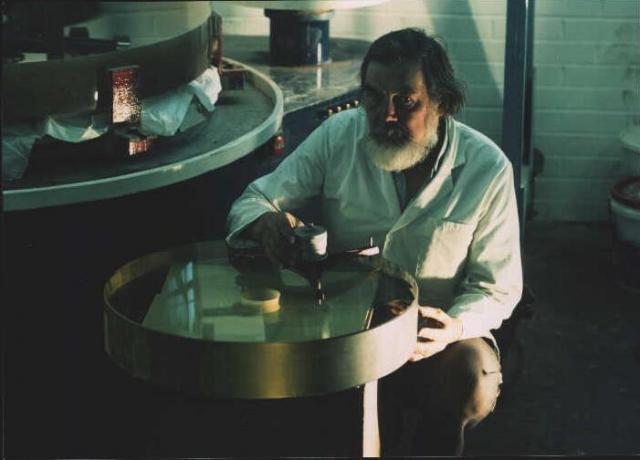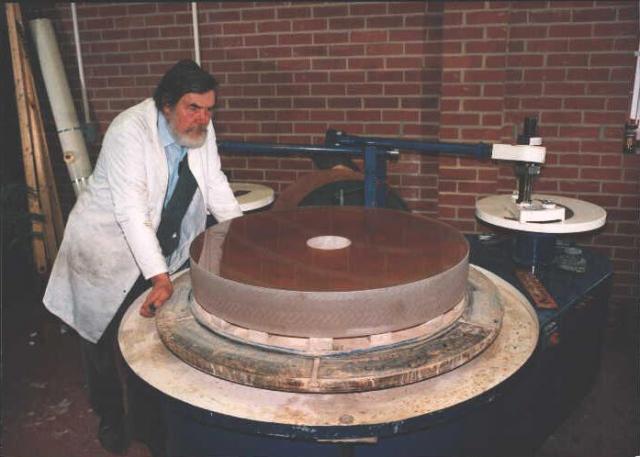Forum Replies Created
-
AuthorPosts
-
John Nichol
ParticipantAnother one from the 5th taken with a Seestar s50
Attachments:
John Nichol
ParticipantHi Jack and all,
I am part of a small group still working to rescue the 24-inch telescope which includes David Sinden’s daughter Caroline. If you have not already signed the petition please do so, it can be found here:
Regards, John Nichol
John Nichol
ParticipantHello,
Just an update on this. We are in the process of putting together a group with the intention of recovering this historic telescope. This will not be an easy task as several failed attempts have been made previously. We are taking a non-confrontational approach in the hope that the current custodian of the telescope will give a positive response. A petition has been set up and we need as many signatures as possible as this will be central in our efforts to secure the telescope. Please help us by signing this and leaving a positive comment. We would particularly welcome comments from those who have had any association with the telescope in the past. Our group will consist of people who have historical links to the telescope and others with appropriate skills. The size of the group will be limited in order to facilitate effective management.
Should we be successful in securing the telescope, moving it from its current location will be a challenging task due to its size and limited access. A crane and truck will be needed to move it.
If recovered it is important that the telescope is used to educate and inspire others to think more about our precious earth and the universe in general.
It seems like our historical observatories such as the former home of the RGO at Herstmonceux and Mills observatory, Dundee, are increasingly under threat. Although I believe the Mills Observatory has now been given a reprieve. I am sure that you will agree that we must do our best to hold onto our historical observatories and telescopes and not allow them to pass into history. Here is the link to the petition:
https://www.change.org/p/save-espin-s-telescope-let-it-be-restored?source_location=search
Thanks for looking.
John Nichol
John Nichol
ParticipantVery sorry to hear this I was pleased to be able to supply David with many mirrors for his telescopes. Always a pleasure to deal with, thinking of his family and friends at this difficult time.
John Nichol
John Nichol
ParticipantYes, a great shame about the demise of this historical instrument. I have attached some images of the telescope and David Sinden with the 24 inch mirror. Perhaps Beamish museum would be a suitable home of the telescope?
Regards,
John Nichol
John Nichol
ParticipantHi, Denis, Thanks for that. It should be OK now!!!
John
John Nichol
ParticipantIf you have read through my previous posts you will have some idea about the man and his achievements. Dave was a character and left a lasting impression with those who had the good fortune to meet him. As well as working at was the cutting edge of astronomical optics he also devoted time to popularising astronomy. He was a great talker, it has been said that he could have talked for England. He always had time for people giving freely of his knowledge and experience.
By the time I met David I had already made my first telescope mirror; his enthusiasm inspired me onwards and upwards. Optics became an important part of my life and still is today.
If you would like to read more about David, or indeed his beloved Grubb Parsons, please have a look at my webpage:
https://sites.google.com/site/grubbparsons/home/grubb-parsons
It is a great shame that the national astronomy magazines have missed the opportunity to celebrate David’s life and achievements.
David Sinden 1932-2005 RIP
John Nichol
ParticipantHere is a list of some of the instruments David worked on at Grubbs……
48-inch reflector, Victoria, Canada, 1961
40-inch reflector, Pic du Midi, France. Optics only 1962
The 40 inch Elizabeth telescope. S. Africa 1963
74-inch reflector, Helwan (Kottamia), Egypt, 1963
30-inch reflector, Jungfraujoch, Switzerland, 1966
16/24-inch Schmidt, Castel gandolfo, 1967
The 98 inch Issac Newton Telescope at Grubb Parsons. 1967
72 inch (182cm) Mirror for Padua, Italy. 1973
48/72-inch Schmidt, Siding Spring, Australia, 1973
154 inch Reflector, Siding Spring, Australia. 1974
48-inch reflector, Athens University, Greece, 1975
150-in mirror, UKIRT, Hawaii, 1976
60 inch Reflector, La Silla, Chile 1976
John Nichol
ParticipantDavid undertook a lot of restoration work on the historical telescopes at Armagh Observatory…
http://star.arm.ac.uk/history/Domes/Sinden/
http://star.arm.ac.uk/movies/Grubb15inch/
http://star.arm.ac.uk/history/Domes/15inch/Jan/
http://star.arm.ac.uk/history/instruments/Calver/Calver.html
John
John Nichol
ParticipantIn recognition of David’s work an asteroid was named in his honour: 10369 SINDEN
What better lasting memorial could anyone hope for?
John
John Nichol
ParticipantThere are many anecdotes surrounding David, here is on of my favourites….
David had been for a night out with his wife Helen; they were using their usual form of transport, a motorcycle. On the journey home David decided that he would do some observing, there was a meteor shower that evening and one of David’s interests was trying to photograph the spectrum of a meteor using a prism in front of the camera lens. On arriving home Helen went into the house and David went into the garden to set up is equipment which he stored in the garden shed. After few minutes Dave heard a voice from over the garden wall,” Good evening sir”, he turned to see a policeman. Dave realised some explaining would be needed. After describing that meteors were really particles of rock passing through the Earths atmosphere the policeman looked at Dave and said, “That would explain the crash helmet you are wearing then sir!”.
John
John Nichol
Participant
John Nichol
ParticipantThe Sinden Optical Company (SOC) had considerable success in the production of camera obscuras. The following is taken from the original SOC website and was almost certainly written by Dave…
The instrument produces an image on a curved horizontal screen placed in the centre of a darkened room. Observers stand around the screen, looking down at a convenient angle. The viewing screen is curved for the same reason that the retina of the human eye is curved. The image is luminous and in full colour, with movements the outside screen reproduced exactly as nature. In good light conditions the image is filled with luminous delicate colour. Subtle, seductive and very beautiful in its nature. This is “real” light and living colour painted directly onto the screen by nature itself. Sunsets with the Camera Obscura can be quite breathtaking beyond words!
SOC went on to produce a number of camera obscuras including:
The national Garden festival in Gateshead.
The TaviraTower, Cadiz.
The Castelo de S. Jorge, Lisbon, Portugal
JerezSpain
Habana, Cuba
ForedownTower, Hove, E Sussex
The SOC website goes on to say..
Our large Camera Obscura is designed and engineered to last for a very many years with the minimum possible maintenance. The main lens of our instrument is an astronomical aplanatic which is normally made about 12” in diameter and with a focal ratio designed to suit the proposed building. The instrument can be rotated in Azimuth and Altitude so as to cover the whole horizon. The concave screen is usually about 2 metres diameter and can be raised or lowered to control the focus over a large range. We supply and install the complete instrument including the viewing screen. We can advise you on building modifications and arrangements necessary to accommodate the Camera Obscura.
John Nichol
ParticipantThe Espin Telescope
Thomas Henry Espinall Compton Espin was vicar of Tow Law, Co. Durham, from 1888 until his death in 1934, aged 76. He was a keen astronomer with an interest in double stars; he went on to personally discover and map an amazing 2,575 of these and was helped in his work by William Milburn, his assistant observer. Espin’s main telescope was a 24 inch reflector by the famous maker George Calver. After Espin’s death the telescope fell into disuse, it is said that chickens took up residence in the tube! The telescope was eventually rescued and fully restored by David who then presented it to the Newcastle University observatory at Close House. In August 2004, one year before David’s untimely death, Newcastle University sold Close House mansion and golf course which were redeveloped as a hotel. As a result of this the observatory fell into disuse and the 24 inch telescope suffered once again from neglect. The latest news I have is that the telescope has been removed from the leaking dome and is now in storage. Perhaps a fitting tribute to this historical telescope would be relocation to Beamish museum where it could be enjoyed by the many visitors.
John
John Nichol
Participant
John Nichol
ParticipantSorry about the picture David, not too sure what is going on there!
At last autumn’s Kielder star party an excellent talk was given by Professor Andy Newsam highlighting the work of the highly successful Liverpool telescope. The secondary mirror for the telescope was made by the Sinden Optical Company, it is about 60cm in diameter and is convex in shape which makes it very difficult to test as such a mirror does not form a real image. In addition the surface has a shape described as hyperbolic. Such optical components are renowned for being difficult to make. Had David been sitting in the audience that day he would have had good reason to be satisfied with his contribution to the Liverpool Telescope and its part in the advancement of astronomy.
For more information about the Liverpool telescope look here.. http://telescope.livjm.ac.uk/
John
John Nichol
ParticipantHere is a picture of Dave with the original 98 inch mirror for the Isaac Newton Telescope….
-
AuthorPosts





